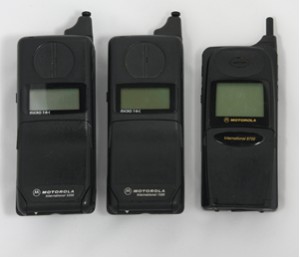Motorola 5080/5200/7200/7500

MicroTAC meets GSM
- Date launched: from 1994
- Network: GSM 900Mhz
- Form: Flip
- Size: 5080 58(w)x138(h)x37(d) mm
- Standby time: 5080 7.5hrs
- Weight: 5080 326g
- Cost new: £59 to £352
- Can you use it today: Yes
Motorola's successful analogue MicroTAC was chalking up sales in the UK and the USA. Although they based their first attempt at digital phones on the heavy transportable and brick forms, the small, light and trendy MicroTAC seemed the obvious choice for the new technology.
From 1994 Motorola brought out a succession of new phones developed from the MicroTAC for GSM. With the digital phones the 'flip' became a thin piece of plastic covering the keys. Digital circuitry was more bulky and this was a way of hiding it.
Motorola developed a range of these phones from 1994 to 1997 catering from every price point from entry level to prestige phones.
- Motorola 5080 - basic GSM phone
- Motorola 5200 - improved version 1994
- Motorola 7200 - slimmer phone with SMS 1994
- Motorola 7500 - updated version 1995
- Motorola 8200 - new prestige version 1995
- Motorola 8400 - updated version launched 1996
- Motorola 8700 - ultra slim prestige version with larger display 1996
- Motorola 8900 - final version, dual band 1997
Motorola also developed the basic MicroTAC digital phones for the One2One and Orange networks. One2One's more expensive phone, the M300, was a restyled Motorola flip phone and Orange offered the MR1 as an alternative to the Nokia 2140.
The MicroTAC series was eventually eclipsed by the smaller and lighter StarTAC at the top end and by cheaper phones such as the budget Motorola Memphis at the bottom end of the market.
Resources
Motorola MicroTAC on Wikipedia
As an eBay Partner, I may be compensated if you make a purchase
Comments (9)